![]()
Chum 2010
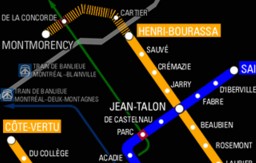
extension of the orange line to Laval (2008)
the Park Avenue name change controversy (2006-2007)
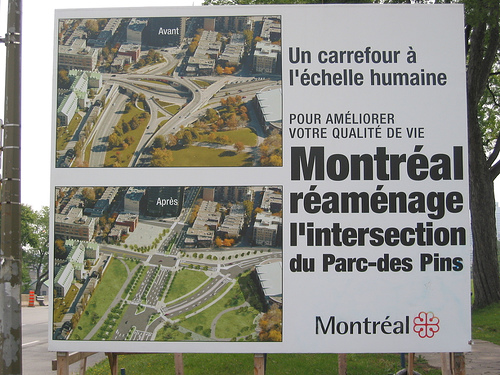
the new Pine-Park Interchange (2006)
1st World Outgames (2006)
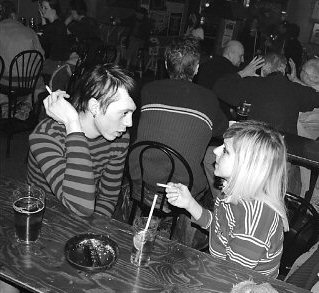
the smoking ban (June 1, 2006)
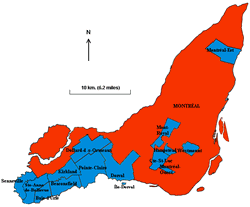
the 2006 demerger
Jessica Holman-Price (December 19, 2005) was killed by a snow-removal truck
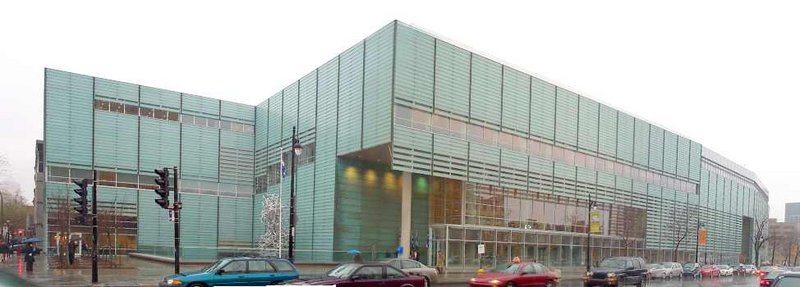
Grande Bibliothèque du Québec (23 April, 2005)
Le projet Robot-Cam (2004)
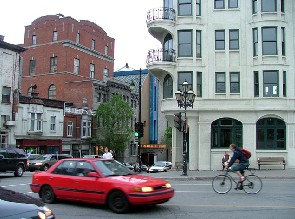
Hotel Godin (2004)
Chez Marijane (November 2003)

la Cité du commerce électronique (200?)
piknic electronik (2003)
the South Park skate park in Brossard (2003)
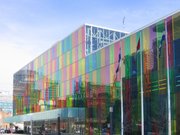
Palais des congrès de Montréal (December 6, 2002)
pop montreal (2002)

the Concordia riot (September 9, 2002)
l’Agora festif (May 2002)
the hip hop symposium (2002)

maisonneuve magazine (2002)
stm (2002)
the Long Hall (2001)
Art Matters (September 2000)
SurfMontreal

Montreal Science Centre (May 6, 2000)
Le Festival Montréal en lumière (2000)
Casa Del Popolo (2000)
the people's potato (1999)
ex-centris (1999)
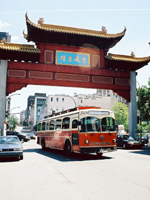
gates to Chinatown (1999)
Zeke's Gallery (1998)
cjpx fm (25 juin 1998)
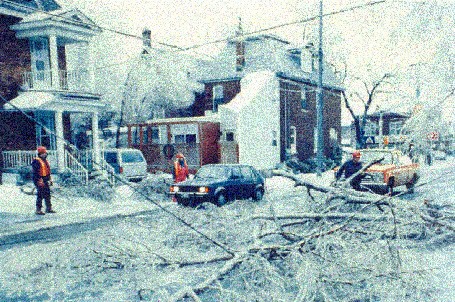
the 1998 ice storm
![]()
Java U (1996)
Vortex (1996)
the Fantasia Film Festival (1996)
Nuit Blanche sur Tableau Noir (1996)
the SAT (1996)
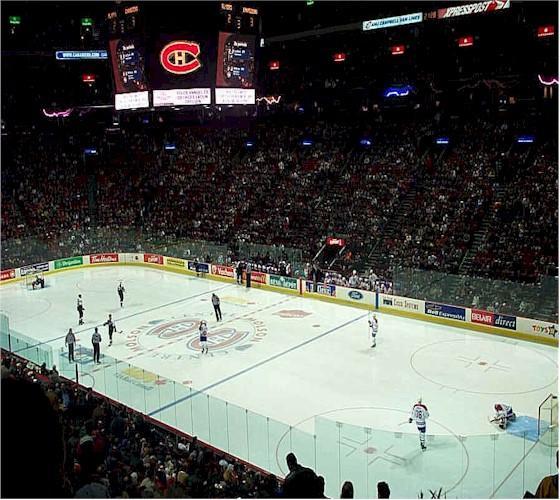
the Molson Center (March 16, 1996) became the home of
the Montréal Canadiens after they left the Montréal Forum
.jpg)
Sona (1996)
Horizon Roc (1995)
Éco-quartiers (1995)
Vice (1994)
a Mechanical Engineering professor (August 24, 1992)
shot five colleagues on the ninth floor of the Hall Building

Biodôme (June 18, 1992)
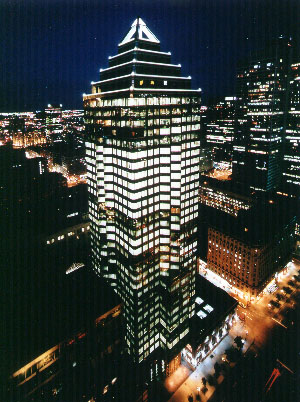
la Tour McGill (1992)

la Tour IBM-Marathon (1992)
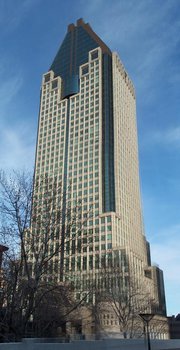
1000 de la Gauchetière (1992)
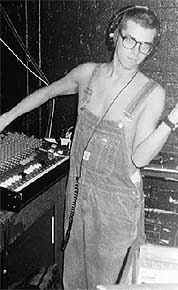
Crisco (1991-March 1992)
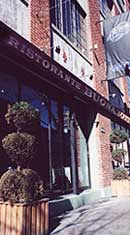
Buona Notte (1991)
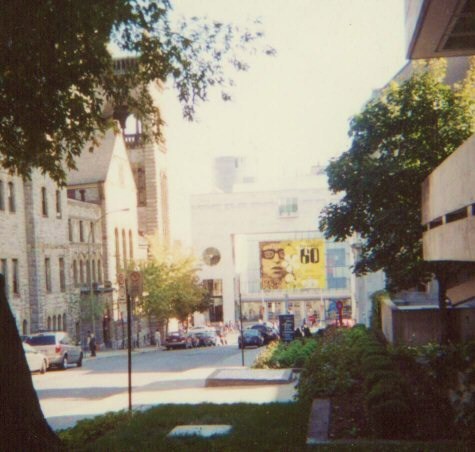
the Jean-Noël Desmarais Pavilion (1991)
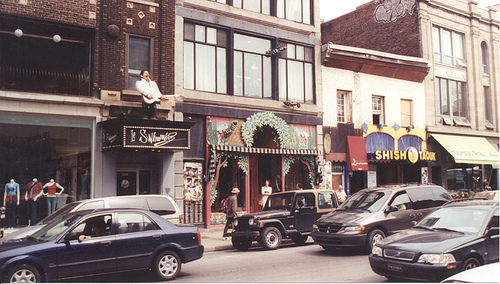
le swimming (1990-2005)
Theatre la Chapelle (May 1990)
in the Montréal Massacre (December 6, 1989) 14 women students at the École
Polytechnique were systematically killed and 13 other students wounded by a lone gunman
Studio 303 (1989)
MusiquePlus (1988)
dans la rue (1988)
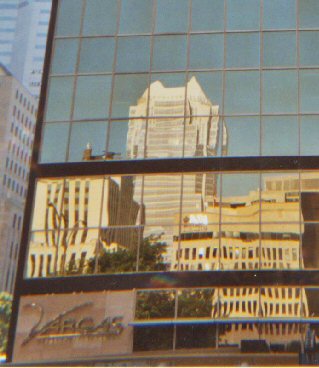
Place de la Cathédrale (1987)
Lachine Rapids Tours (1986)
Les Amis de la montagne (1986)
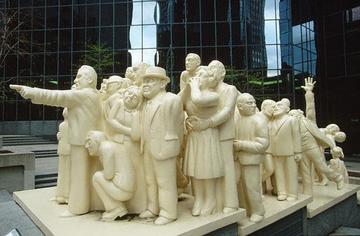
the Illuminated Crowd (1986)
the Mirror (June 20, 1985)

Cirque du Soleil (1984)

Centre d'histoire de Montréal (1983)
Value Village (1980s)
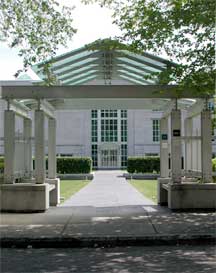
the Canadian Centre for Architecture (1979)
the Jazz fest (July 1979)
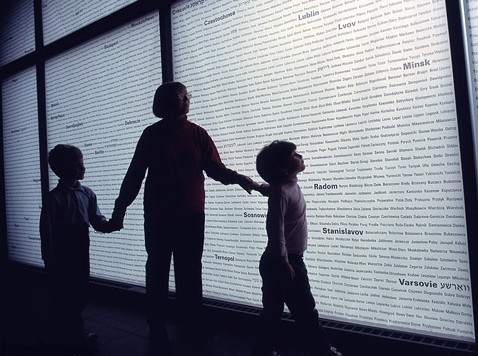
the Montreal Holocaust Memorial Centre (1979)
the Port of Montreal ceded the area known as the Old Port (1978) to the Old Port Corporation,
a public corporation charged with developing tourism and recreational activities in the area

the Formula One Canadian Grand Prix (1978) on the Circuit Gilles Villeneuve
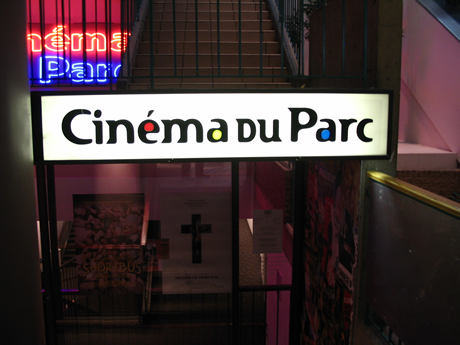
La Cité 3 (1977) was named Cinéma du Parc in the early 1990s

la Loi 101 (August 26, 1977) expanded on the Official Language Act from 1974 which was
enacted under a Liberals government to make French the sole official language of Quebec
the word (1977)
Edgar Trottier (February 6, 1977) was run over by René Lévesque in his car on Cote-des-Neiges

the Summer Olympics (1976)
Café Santropol (1976)
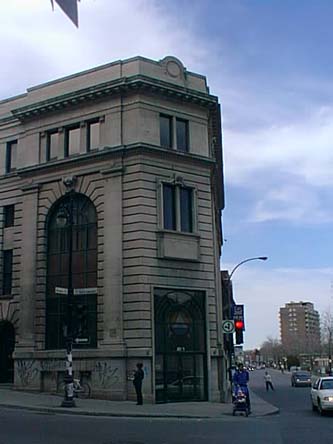
the Native Friendship Centre (1975)
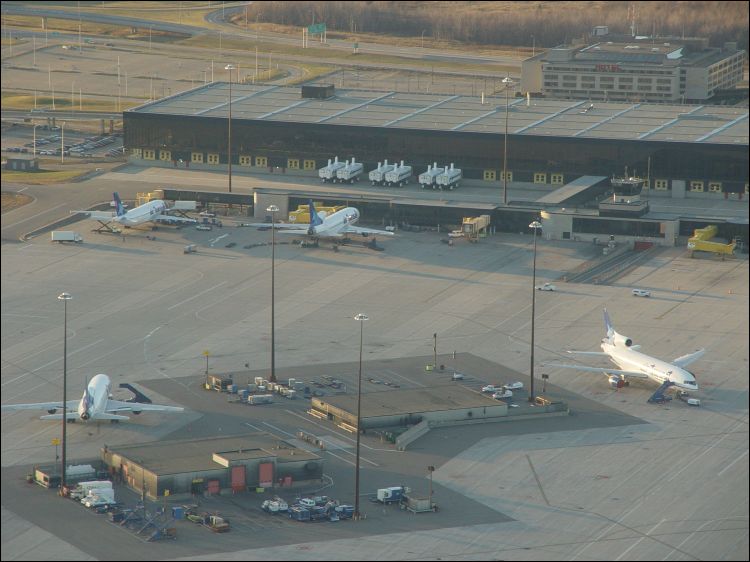
Mirabel (October 4, 1975)
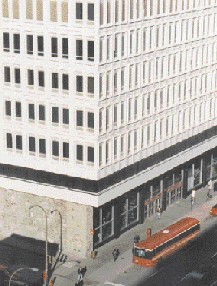
Concordia University (August 24, 1974)
international film festival (1971)
cheap thrills (1971)
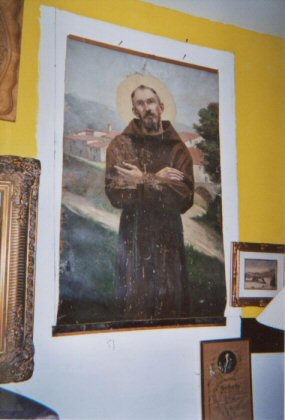
Jean Pierre Rioux (19??)
Dawson College (1969)
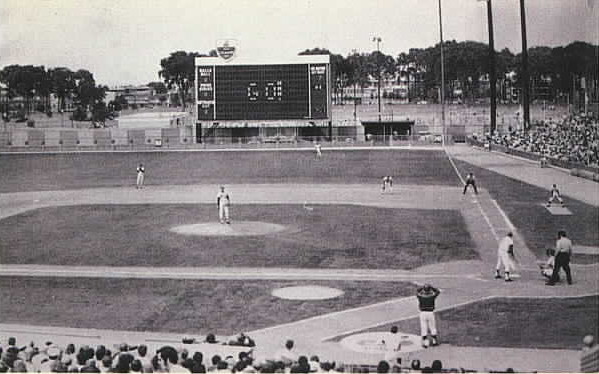
the Montreal Expos (1969-2004)
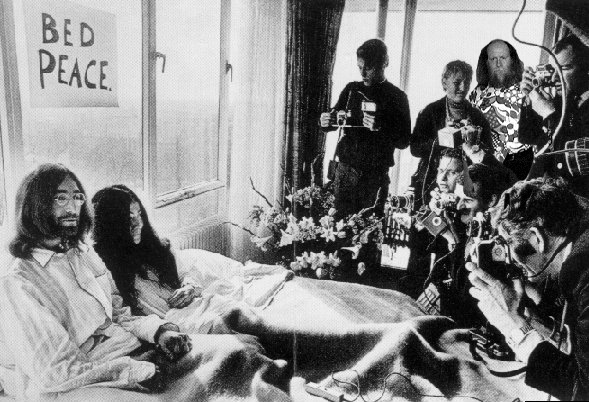
John Lennon and Yoko Ono (May 26 - June 2, 1969) recorded the song Give
Peace a Chance during their bed-in in Room 1742 at the Queen Elizabeth Hotel
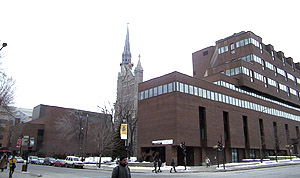
UQÀM (April 9, 1969)
the Front de libération du Québec (February 13, 1969) set off a massive bomb at the
Stock Exchange that blew out the northeast wall and seriously injured thirty-eight people
tam tams (1968)
le Theatre d'Aujourd'hui (1968)
Sir George Williams students occupied the ninth floor computer labs (1967) and held a sit-in
on the fourth floor in protest of what they deemed institutional racism against blacks at the school
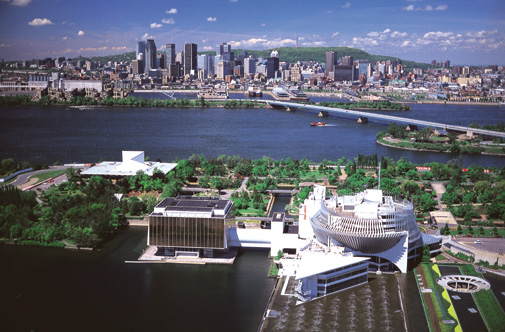
the Montreal Casino (1967)
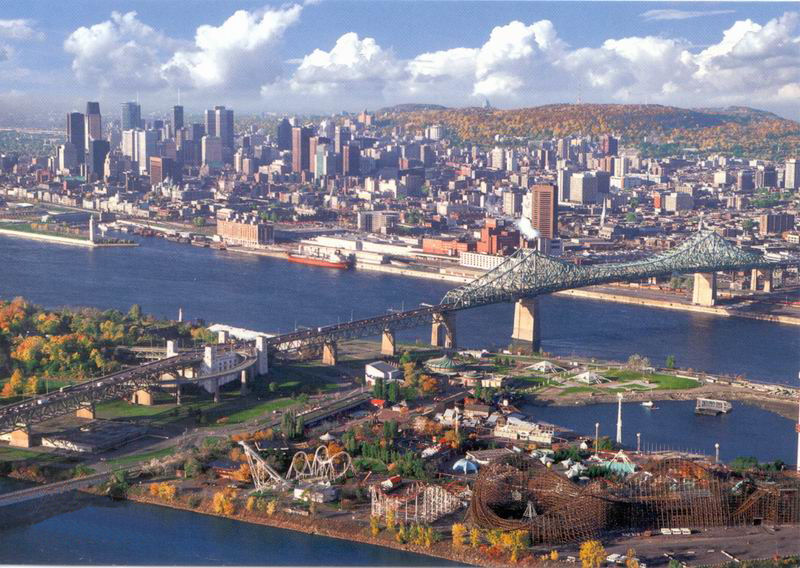
la Ronde (1967)
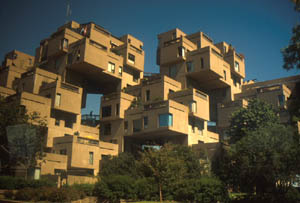
Habitat '67 (1967)
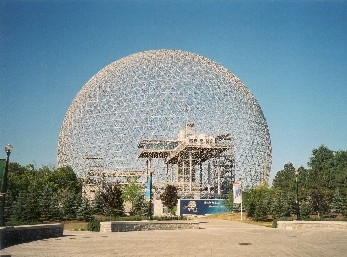
Biosphere (1967)

Expo '67 (1967) was a World's Fair held in Montreal
on St. Helen’s Island and Ile Notre Dame,
to coincide with the Canadian Centennial that year
the Saidye Bronfman Centre for the Arts (1967)

Metro (October 14, 1966) the original fare was 20¢
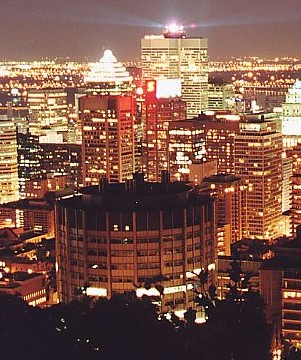
the McIntyre medical sciences building (1965)
Ckut (1960s)
le Musée d'art contemporain (1964)
Le Journal de Montréal (1964)
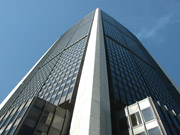
La Tour de la Bourse (1964)
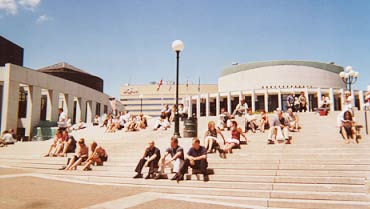
Place des Arts (September 21, 1963)
la Cinémathèque québécoise (1963)
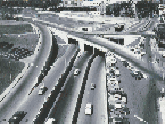
the Pine-Park Interchange (1962)
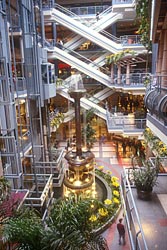
the Underground city (1962)
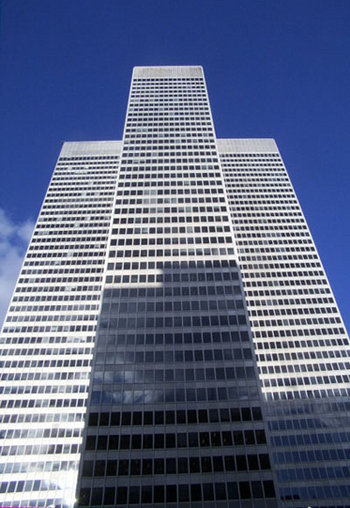
with the Place Ville-Marie building (1962) came the Altitude 737 restaurant and night-club (named
for its elevation in feet from sea level) and the rotating beacon that lights up Montreal's night skyline
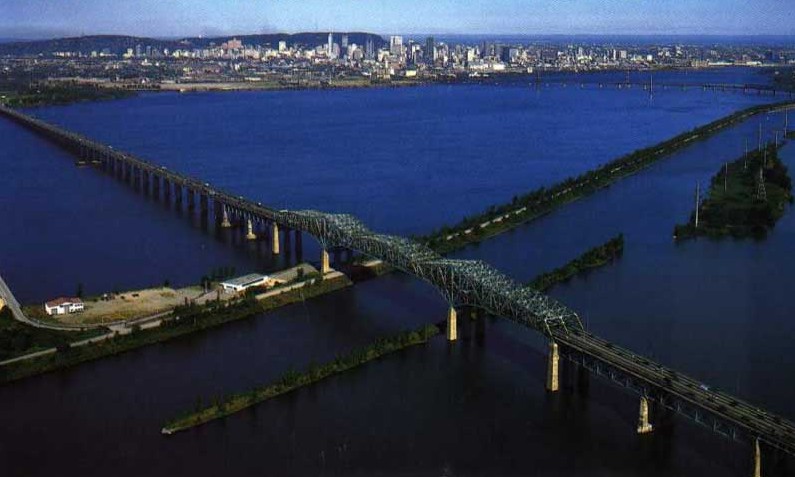
the Champlain Bridge (June, 1962) was opened to traffic

the great Antonio (1960)

the St. Lawrence Seaway (1959) was officially opened
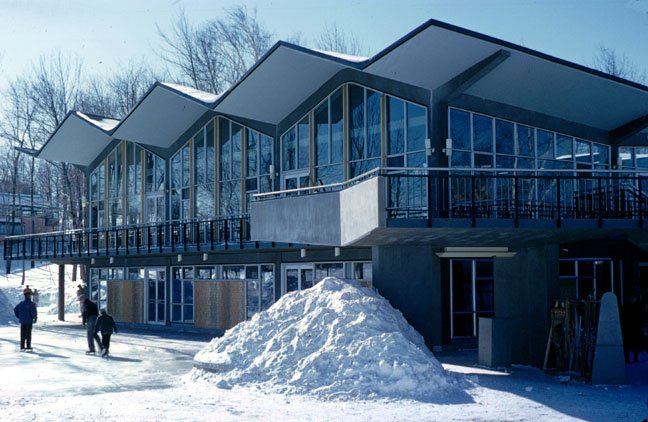
the Beaver Lake Pavillion (1958)
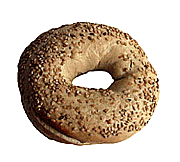
St. Viateur Bagels (1957)
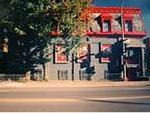
le Théâtre de Quat’Sous (1955)

the Richard riot (March 17, 1955)
Sun Youth (1954)
le Théâtre du Nouveau-Monde (1951)
Fairmount Bagels (1949)

Université de Montréal (June 3, 1943) moved to its new campus

the Orange Julelp (1942)

Montréal-Dorval International Airport (1941)

the Sun Life Building (1941)

Beaver Lake (1938)

Warshaw (1935-2002)
the Montreal Neurological Institute and Hospital (1934)
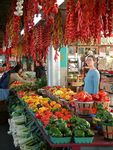
Jean-Talon Market (May 1933)
La Sala Rossa (1932)
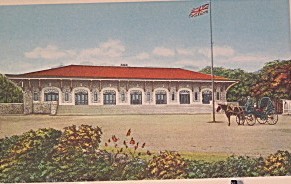
the lookout chalet (1932)
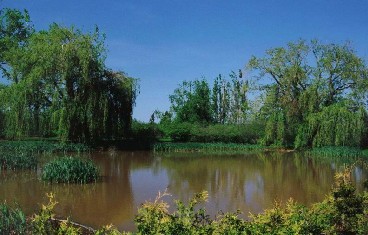
Jardin botanique (1931)
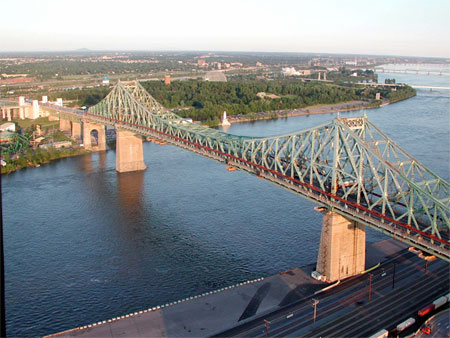
Jacques Cartier Bridge (1930)
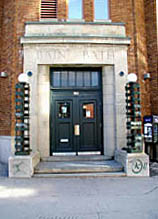
Piscine Schubert (1929)
Eaton's (1927)

Segal's (1927)
Schwartz's (1927)
la Croissanterie Figaro (1920s)
at Sir George Williams College (1926) University
level courses were introduced between 1929-31

the Montreal Forum (1924)

today, the mountain is crowned by a 31.4-metre-high illuminated cross, installed in 1924 by the
Société Saint-Jean-Baptiste and now owned by the city. It was converted to fibre-optic light in 1992

Saint Joseph's Oratory (1924)
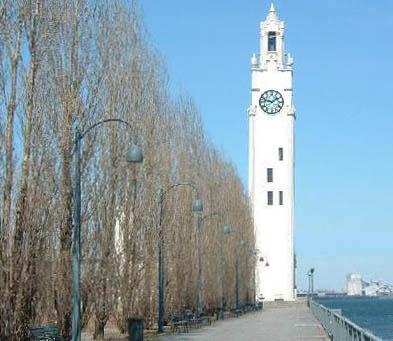
the Clock Tower (1922)
liberson monuments (1922)
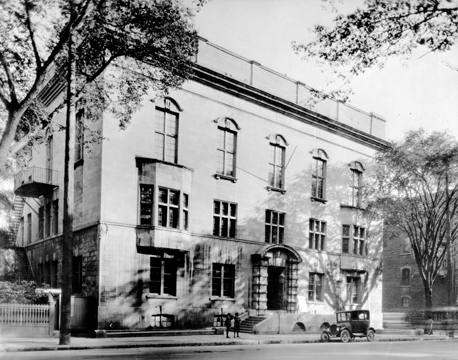
McCord Museum (1921)
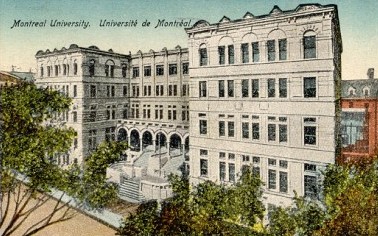
Université de Montréal (February 14, 1920) was officially
recognized, although the institution had already existed since 1878

the city's first regular bus service (November 22, 1919)
was launched on St-Étienne Street, better known as Bridge St.
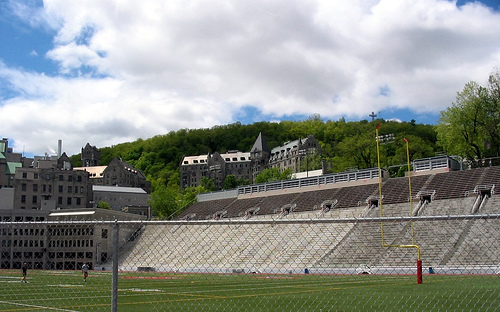
Molson Stadium (October 25, 1919)
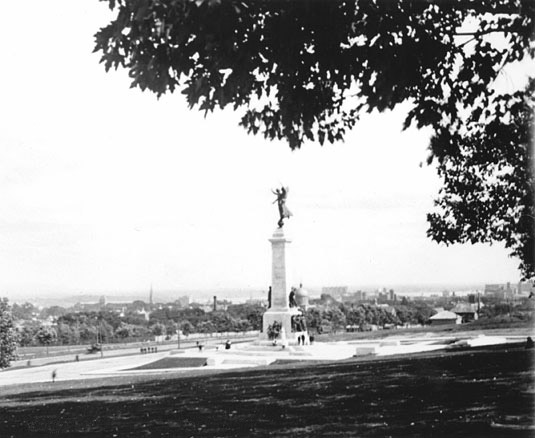
le monument Sir George Étienne Cartier (1919) a été batie par George William Hill

Chateau Dufresne (1918)
the Théâtre Saint-Denis (1915)
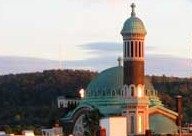
St. Michael's (1915)
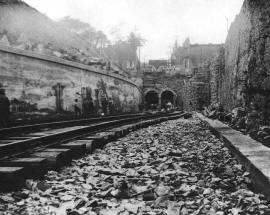
Mount Royal Tunnel (1913)
the Ritz-Carlton (1912)
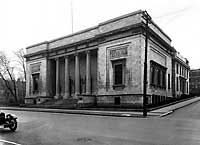
le pavillon Michal et Renata Hornstein (1912)
houses the Montreal Museum of Fine Arts

Parc Lafontaine (1909)

Montreal Canadiens (1909)
Ogilvy's (1908)

Blue Bonnets Racetrack (1907)
St. Lawrence and Saint-Lambert streets (1905) in Old Montreal were merged, and the street was
officially named Saint-Laurent Boulevard. At the same time, the city established its east-west civic
numbering system with Saint-Laurent Boulevard dividing the two sides
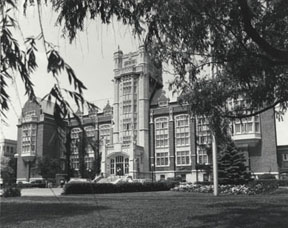
Loyola College (1896)
Palace Theater (1896)
Monument National (1894)
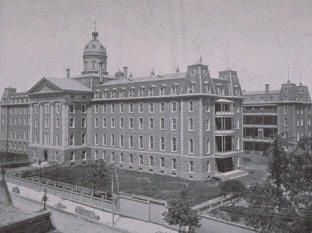
Institute for the female deaf & dumb of the province of Quebec (18??)
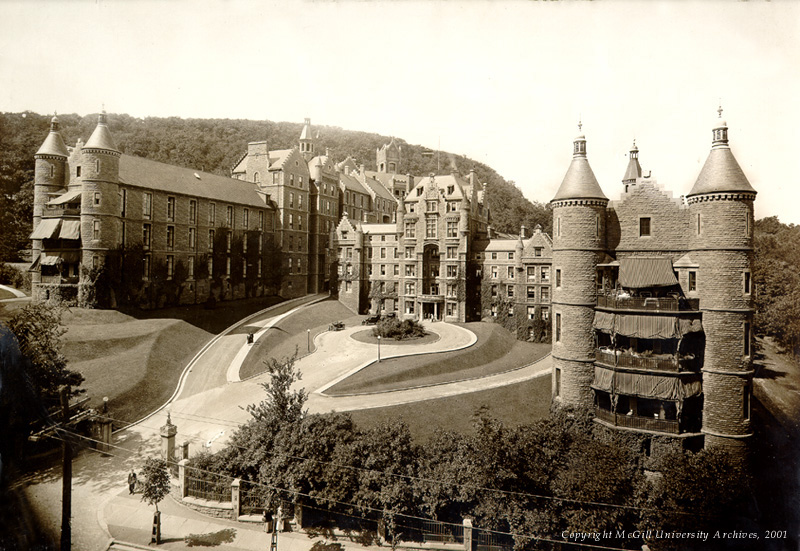
the Royal Victoria Hospital (1893)
Baxter block (1892)
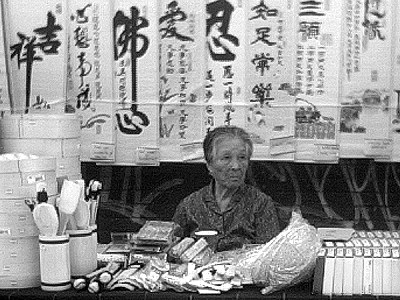
Chinatown (1891)
the Old Brewery Mission (1889)
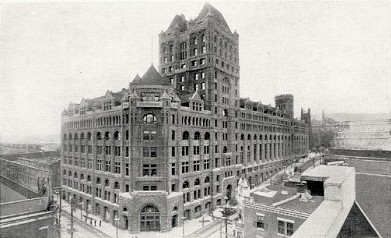
Windsor Station (1889) was the Canadian Pacific Railway's headquarters
St. James United Church (1889)
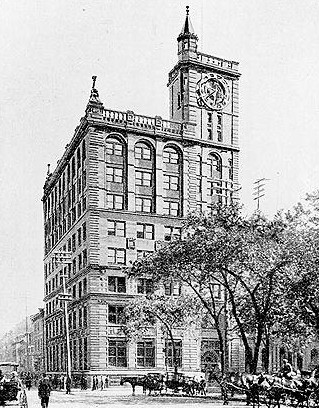
the New York Life Insurance Building (1888) is Montreal's first sky skraper
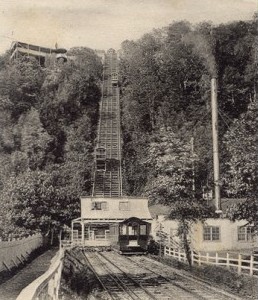
an incline railway (1884-1918) operated on the slopes of Mount Royal
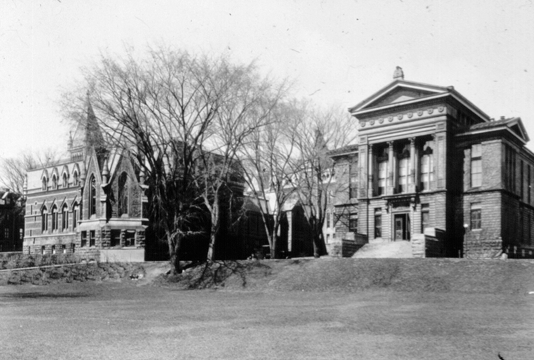
Redpath Museum (1882)
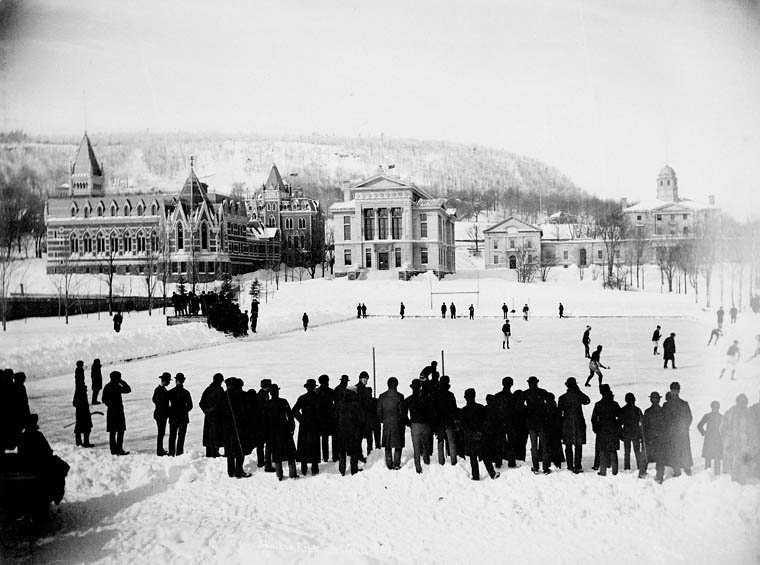
McGill University Hockey Club (1880)
the Globe Theatre (1880)

l’Hôtel de ville (1878)
Square St-Louis (1876)
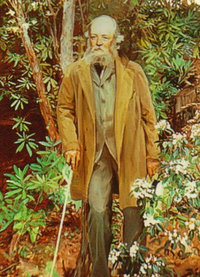
the Parc Mont-Royal (May 24, 1876) was designed by Frederick Law Olmsted
the city bought the land of Mount royal (1875) for 1 million dollars
the Montréal Stock Exchange (1874)
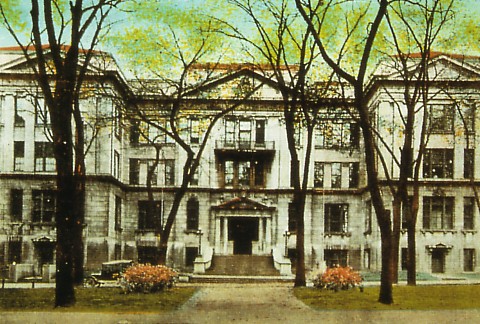
l'École Polytechnique (1873)
moise tellier's apple shop (1869)
Morgan's (1866)
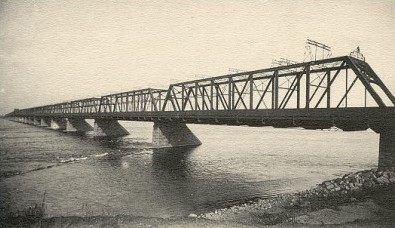
the Victoria Bridge (1860)

Christ Church Cathedral (1859)
fire razed the eastern part of the city and the faubourgs (July 8, 1852)
destroying close to 20% of Montreal’s housing
the Montreal YMCA (1851) is the first YMCA to be founded in North America

the exterior staircase originated (19th-century) with a law which stipulated that a green space be left in front of buildings
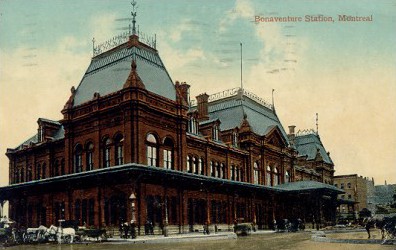
Bonaventure Station (1847)

Bonsecours Market (1840s)
Bourse de Montréal (1832)

Montreal was incorporated as a city in 1832. The city's growth was spurred by the opening of the Lachine Canal,
which permitted ships to pass by the unnavigable Lachine Rapids south of the island. Montreal was the capital of
the United Province of Canada from 1844 to 1849, bringing more English-speakers to the city, making it
roughly bilingual. The now large Anglophone community built one of Canada's first universities, McGill, and the
wealthy began building large mansions at the foot of Mont Royal
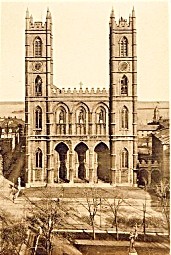
Notre-Dame de Montréal Basilica (1829)

the Lachine Canal (1824)
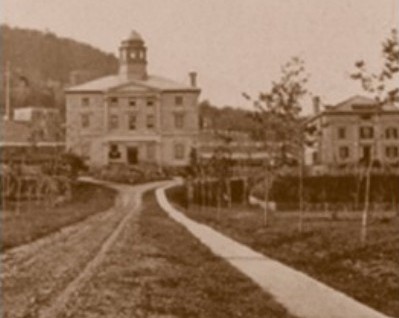
McGill (1821) obtained its charter. Construction
on the arts buliding was completed in 1843
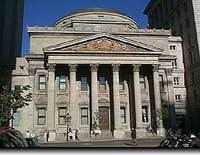
Banque de Montréal (1817)

the Nelson column (1809) is Montreal's oldest monument
Molson Brewery (1786)
the North West Company (1779)
fire destroyed one quarter of the town (May 18, 1765)
French governor Marquis de Vaudreuil instructed François Gaston de Lévis to surrender Montreal to the British
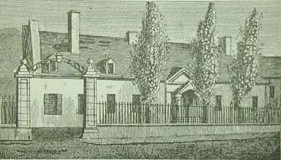
Château Ramezay (1756)
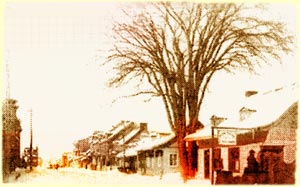
construction on the St. Lawrence Road (1733) was finished
Maison du Calvet (1725)
the fortifications (1716)
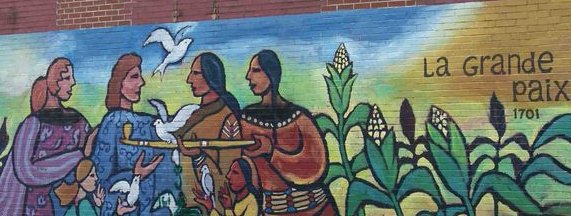
the Iroquois continued their attacks on the settlement until a peace treaty was signed in 1701.
The town remained French until 1760, when Pierre de Cavagnal, Marquis de Vaudreuil surrendered
it to the British army under Jeffrey Amherst
the Sulpician seminary (1685)
Rue Notre-Dame (1672) was Ville Marie's first street
the Sulpicians (1657)
Hôtel-Dieu de Montréal (October 8, 1645)
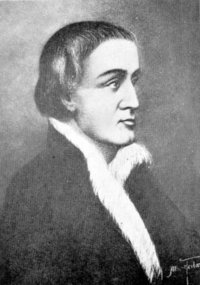
the first cross on the mountain was placed there in 1643 by Paul Chomedey de Maisonneuve, the founder
of the city, in fulfillment of a vow he made to the Virgin Mary when praying to her to stop a disastrous flood
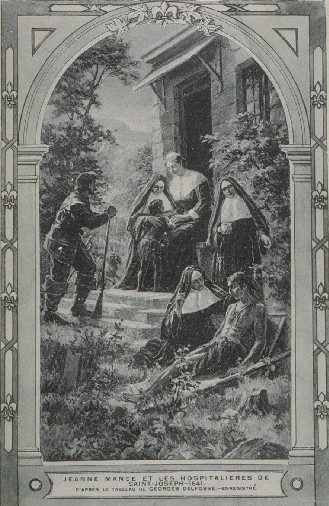
Missionaries Paul Chomedey de Maisonneuve, Jeanne Mance and a few French colonists set up a mission
named Ville Marie on May 17, 1642, as part of a project to create a French colonial empire dedicated to
the Virgin Mary. Their Christian utopian imperialist ideology did not proceed smoothly, however; a historical
plaque at the Place d'Armes marks where de Maisonneuve himself "...murdered the Iroquois chief with with
his own hands" in 1644
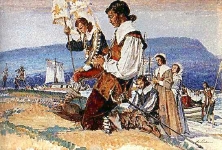
Charles Huault de Montmagny (1641) took formal possession of Montreal Island for Sieur de Maisonneuve's colonizing company
the first permanent European settlement (1639) was created on the Island
of Montreal by a French tax collector named Jérôme Le Royer
the Port of Montreal (1630)

Jacques Cartier (October 2, 1535) entered the village of Hochelega, on the Island of Montreal